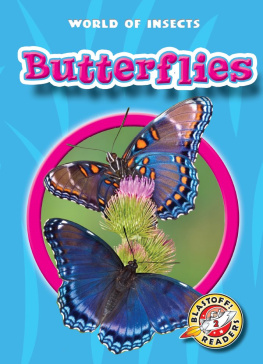Entertaining and informative, the book fills us with a sense of adventure and prompts us to pack our bags and get in quest to explore these butterflies in natural habitat... [F]ull marks to Smetacek for this masterpiece that many will cherish on their bookshelves for a longtime. Business World
[ Butterflies on the Roof of the World ] is an engaging memoir that deftly weaves hilarious episodes from the author's life, includes learned observations on the interdependence of insects and plants, juxtaposes serious environmental issues with World War 2 trivia. DNA
This book will be invaluable for both the lay and the specialist reader. The Indian Express
A witty, engaging travelogue spun around the fascinating world of butterflies. Mint-The Wall Street Journal
About the Book
In this book, Peter Smetacek invites us into the fascinating world of butterflies. We accompany him on expeditions deep into the mountains of the Himalaya, high desert landscapes of Ladakh, leopard and bear-infested forests of Kumaon, scenic meadows of Garhwal, and all manner of other habitats, as he attempts to capture rare and interesting speciesan all-black butterfly that hasn't been spotted for over a century, drunken moths that behave no differently from their human counterparts when they are tipsy, high-elevation butterflies that sail over mountain peaks, and caterpillars that are worth more than their weight in gold.
Along the way, in prose that is lucid, witty and always entertaining, he illuminates for the reader the mysterious world of the elusive insects he has spent a lifetime with, and explains why the well-being of butterflies is of vital importance to us all.
About the Author
PETER SMETACEK, an authority on Indian butterflies and moths, has published sixty papers on them and has described a dozen new to science. He pioneered the use of lepidoptera as indicators of climate change with a paper published in 1994. He lives with his wife and two children in Bhimtal, where he runs the Butterfly Research Centre.
ALEPH BOOK COMPANY
An independent publishing firm
promoted by Rupa Publications India
This digital edition published in 2013
First published in India in 2012 by
Aleph Book Company
7/16 Ansari Road, Daryaganj
New Delhi 110 002
Copyright Peter Smetacek 2012
Illustrations Copyright Peter Smetacek 2012
No part of this publication may be reproduced, transmitted, or stored in a retrieval system, in any form or by any means, whether electronic, mechanical, print reproduction, recording or otherwise, without the prior permission of Aleph Book Company. Any unauthorized distribution of this e-book may be considered a direct infringement of copyright and those responsible may be liable in law accordingly.
e-ISBN: 978-93-83064-31-1
All rights reserved.
This e-book is sold subject to the condition that it shall not, by way of trade or otherwise, be lent, resold, hired out, or otherwise circulated, without the publishers prior consent, in any form or cover other than that in which it is published.
Contents
Prologue
The tussock of grass grew at the very edge of the overhang, its wiry blades hanging down into nothingness. From time to time, sharp gusts of wind tossed them about. A circling Yellow Swallowtail ( Papilio machaon ) butterfly came by on his rounds, daintily fluttering along the edge in expectation of the gust that would lift him over to the meadow beyond.
A mile below, Nainital lay basking in the spring sunshine. Rowboats dotted the glittering lake. Tiny cars moved noiselessly along its shores. It all made for an enchanting and slightly unreal sight from up here.
I looked up at the tussock which grew a foot beyond my outstretched arm. Standing on the crumbling ledge with my back to the wall, it was clear that a decision would have to be taken soon. As a matter of fact, there was little to decide. I would have to make that leap of faith, since there was no way back. The question was, when the time came, would that tussock hold or would both of us hurtle down the precipice on our way to oblivion?
There was a bar of chocolate in my rucksack (that was) meant for lunch. Although it was still two hours before noon, it seemed as good a time as any to eat it. Carefully, I brought the rucksack around. That movement dislodged some of the shale that made up the ledge I was on. I watched as the chunks sailed into space and landed in the gully far below with a clatter. Was that to be my fate within the next few minutes?
That morning, I had set off to investigate the butterflies that lived on Naina Peak, the highest mountain in the area. An account from the 1930s stated that there was an isolated colony of Golden Sapphires ( Heliophorus brahma ) in Nainital. They are small butterflies, shining golden with a black border and scarlet crescents on the lower wing. One of those butterflies that, once seen, were never to be forgotten. Over the years, I had explored all the likely spots around the town but had not managed to find them. Only this mountain remained to be investigated. The southern face of the mountain rose half a vertical mile above Nainital Lake in a sheer precipice. On the northern side, it was clothed with forest which, I hoped, was home to these butterflies.
The usual route up the mountain took at least three hours to negotiate, and since butterflies are active from around nine in the morning until an hour after noon, the idea was to arrive there as early as possible. For this, one had to climb the precipice, which took an hour and a half, thus allowing enough time to investigate the area and perhaps discover these tiny golden creatures.
The route was carefully planned with binoculars. From the peak of the mountain, there descended a sharp ridge with a steep gully on either side. It seemed it would be best to ascend the right hand gully and, just below the top, cut to the left: this would bring me directly to the peak. Following this plan, I made my way up the chosen gully one Sunday in 1982. Sheer walls hemmed in this natural funnel. The powdered rock in the gully was not as firm as it had appeared and I had to plod up the near vertical slope on shifting sands. Sometimes, a wrong step would result in a short slide down as the entire surface moved a few feet.
Further up, the precipitous walls gave way to grassy slopes and I gladly moved out of the gully. The entire mountain was composed of crumbly shale, but where it had weathered a bit it held firm enough. Making my way up, I was soon on a vertical, grassy wall, which made climbing easy. Leaping nimbly from tussock to tussock, I reached the point below the crest where I cut left until I got to a sort of pillar of crumbling shale. Embracing it and scrabbling for footholds, I made my way around it, to be confronted with a steep gully and a vertical wall beyond that. The three foot wide gully was as steep as a coal chute and ended a short distance lower down in a vertical drop. Leaping across the gully, I landed on the wall in a move that would have drawn a gasp of admiration from Spiderman himself. Then, hand over hand, I proceeded to the left, until I came to a grassy knoll with enough place to stand.















